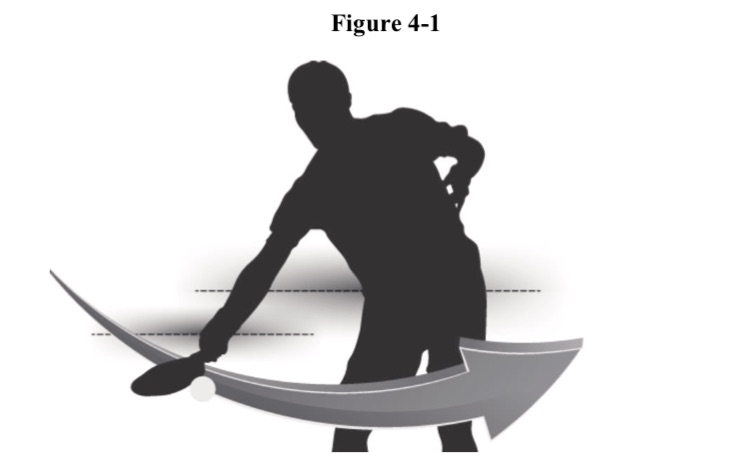Perhaps you have heard the phrases…
“You can’t hit it, if you can’t see it.” or “Hit it? I can’t even see it!”
This highlights a major problem in pickleball (and many other sports). We are all told that we need to watch the ball until it makes contact with the paddle. Well, that seems pretty easy and in warm-ups it can easily be done.
Once a game begins however, many players lose concentration and become so interested in seeing the results of their “hit” that they look up at the last minute and thus often do not hit the ball in the paddle’s sweet spot where it is easy to direct the ball and control the speed.
How many times has this happened to you (and me)…You think you have an easy shot and you are ready for it and when the ball comes you swing for what you think is going to be a good shot or a winner and you whiff; miss the ball completely.
Some players then look at the paddle as though there is a hole in it which the ball just happened to pass through. Most of the time this is caused because, at the last moment, the player took their eye off of the ball.
The two pictures below show highly skilled pickleball players hitting the ball. Notice where their eyes are focusing:
picture courtesy of the USAPA
picture courtesy of YouTube video: Blocking with Sarah Ansboury
https://www.youtube.com/watch?v=FQa0N5TtSW0&feature=youtu.beThese players are focused on watching the ball until the paddle makes contact!
Looking up just before hitting the ball can often cause the ball to hit the edge of the paddle, the handle or somewhere on the paddle face that does not enable the ball to be properly stroked to acquire the appropriate direction and/or speed.
Practicing watching the ball is important. Start with the serve because at that point, you are not anticipating a quick shot coming right back to you. Watch the ball hit the paddle. This will give you a sense and feel of what it is like. Develop this routine and go on to watching the ball on your ground stroke, backhand, lob and dink.
In the video below, pickleball coach Matty Klein discusses the importance of keeping your eyes on the ball and demonstrates how it is done to achieve the proper effect.
Tennis has been closely compared to pickleball because of some of the similarities so let’s consider a study addressed in an article Watch The Ball? How Elite Tennis Players Focus On The Contact Point by By Damien Lafont, PhD and Certified Tennis Coach, France (First published in the ITF Coaching and Sport Science Review, Dec. 2007)
“Additionally, what contrasts with previous studies is that Federer and Nadal (tennis champions of distinction [ed)] not only keep their eye on the ball up to the moment of impact, but after impact their head remains still and in the direction of the contact zone.
This ‘fixation’ of the contact zone is the trademark of elite players.
The most noteworthy finding was that elite players were able to maintain a fairly consistent control; a consistency also illustrated on the women’s tour by Steffi Graf who kept her eyes on the ball on every shot with significant fixation stage after impact.”
Source – https://www.tennismindgame.com/how-pros-watch-the-ball.html
To quote Tennis Professional Michael Emmett: “…none of these techniques are relevant – if you’re NOT watching the ball!”
More Pickleball Videos and Information
To See additional Pickleball Videos & Information Click Here (primarily for beginners and less experienced players)
Check out Additional Pickleball Information and Videos! (for all players including average to more experienced players)
**********
All original content on this blog is copyrighted by Jeffrey B. Ross with ALL Rights Reserved. While reference links back to JBRish.com are appreciated and encouraged, please acquire approval for any reproduction of original content from this website.
©Jeffrey B. Ross 2014 – 2019 – JBRish.com


